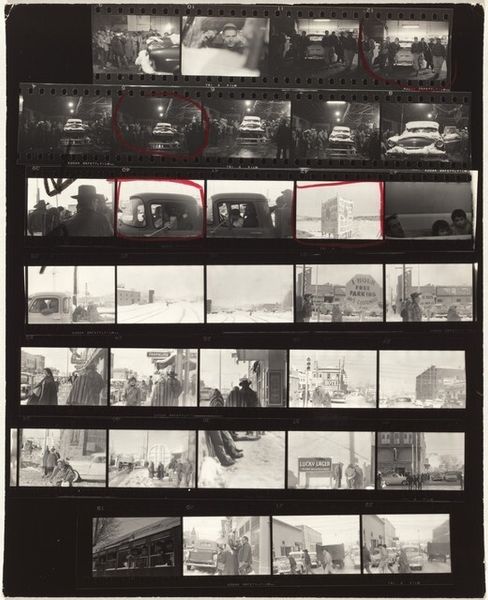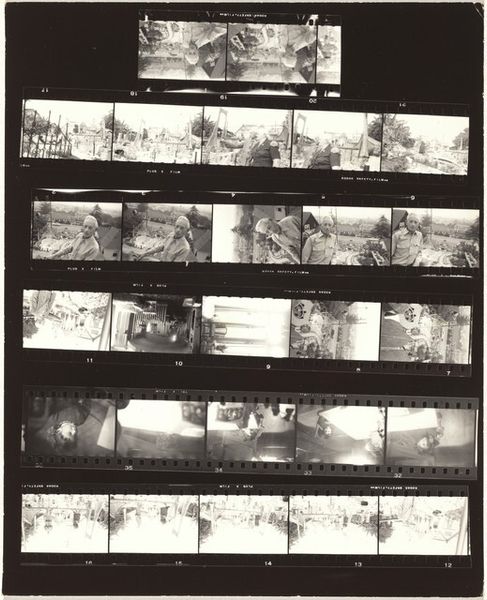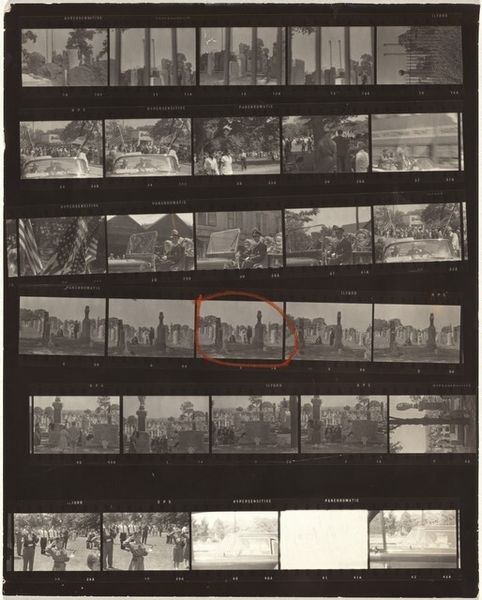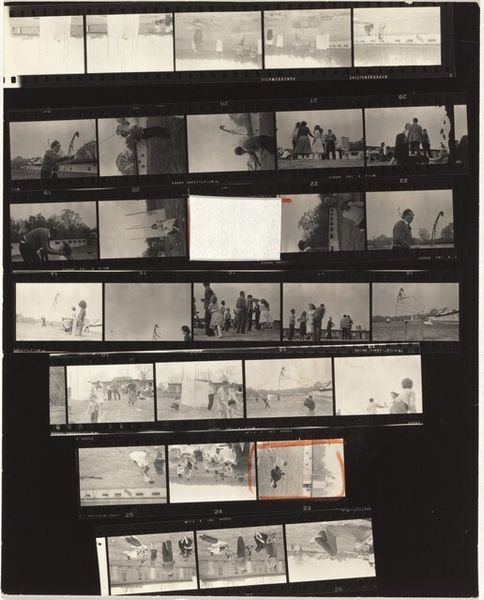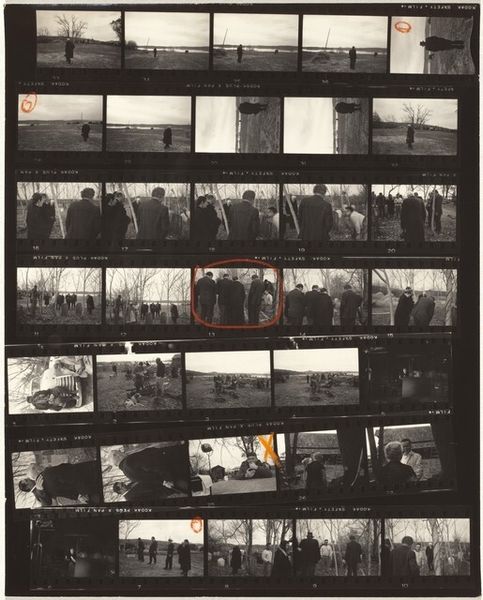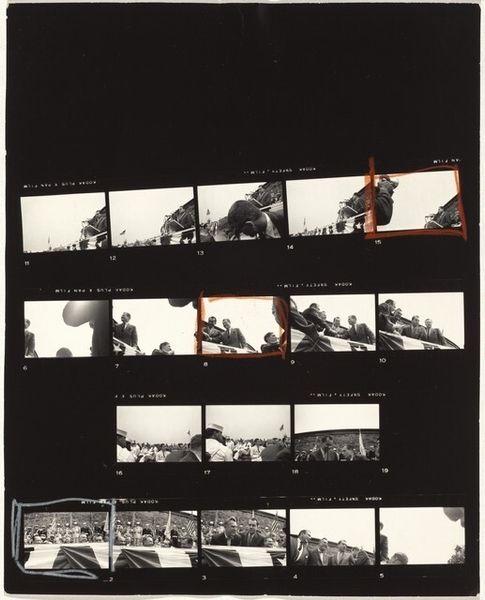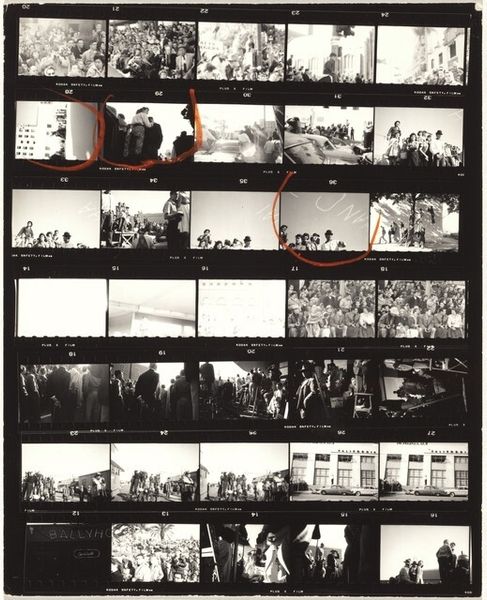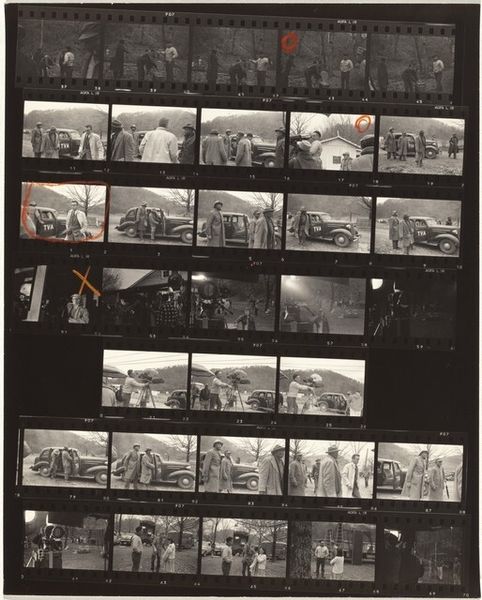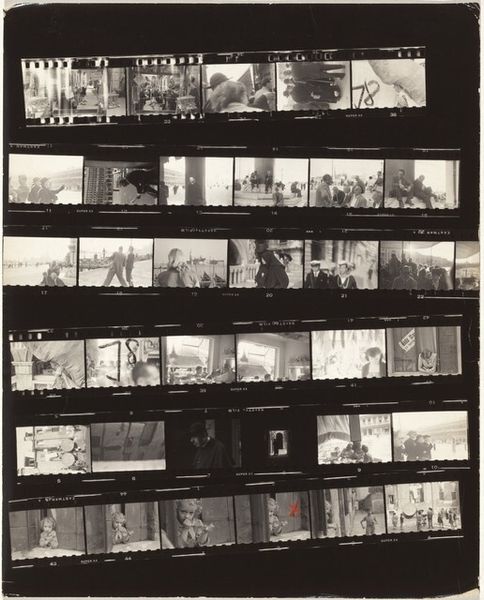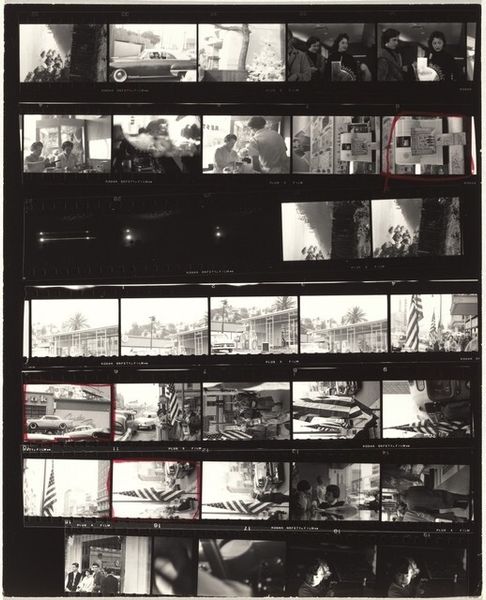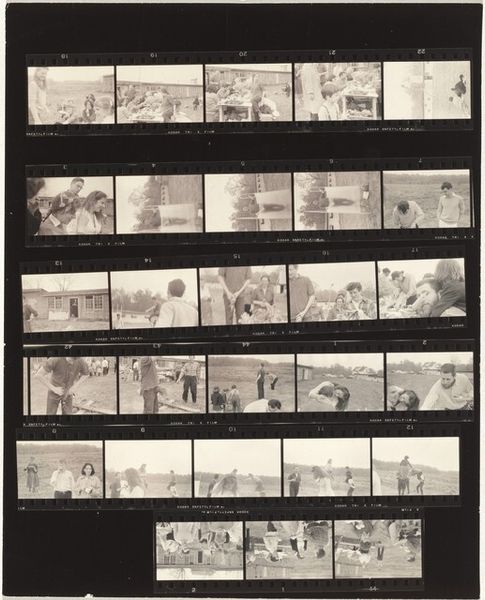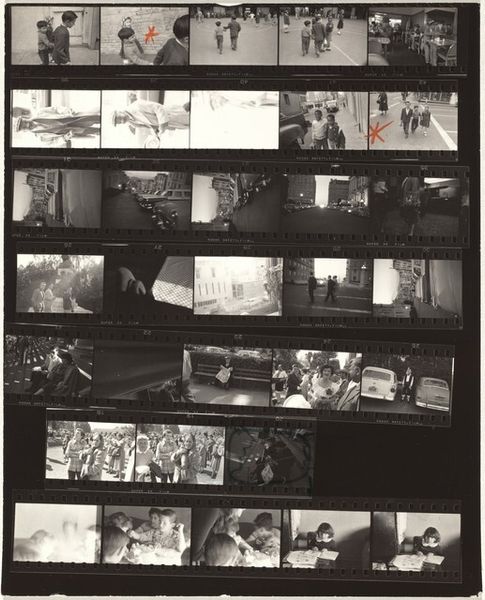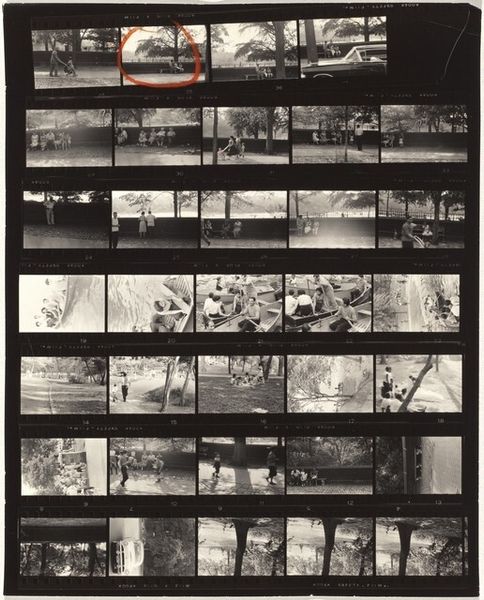
photography, gelatin-silver-print
#
photography
#
gelatin-silver-print
#
genre-painting
#
realism
Dimensions: overall: 25.3 x 20.2 cm (9 15/16 x 7 15/16 in.)
Copyright: National Gallery of Art: CC0 1.0
Curator: We’re looking at a gelatin-silver print by Robert Frank, possibly from 1959, titled "Filming Elia Kazan's 'Wild River'--Tennessee 25". It's a contact sheet showing a series of frames documenting the filming of that movie. Editor: It gives off a strange mix of grit and artificiality. You see the poverty and then the movie set shining through, so much raw emotional material caught up in a constructed reality. Curator: The contact sheet format is significant. Each frame is a fragment, contributing to the whole, but also existing as an individual moment of visual memory. Look at the man in the upper left frames – his determined expression. Editor: Right, the material realities here are powerful. It shows how cinema transforms tangible lives into spectacle, creating stories out of social experience, through physical labor and chemical processing. Curator: The "Kodak Safety Film" markings imprinted on the sheet itself reinforce that aspect of the process you highlight. Each frame is contained by that brand and by the film strip itself. And Kazan’s film itself carries layers of social commentary that resonate within these photographs, considering historical conflicts between individual freedom and social reform. Editor: And notice the markings on some of the frames: a bright orange "X" in one of the strips— almost violently crossing something out. The traces of handling give it a tactile quality, a sense of someone being deeply engaged in the making of an image and then consciously deciding what to discard, a fascinating record of selection. Curator: It seems almost as if Frank wanted to offer an authentic window into a cultural moment, to show a deeper meaning by peeling back the curtain on what it took to construct the appearance of realism. Editor: I come back to the concept of cinematic reality built on lived experience. Frank presents both the image and the process through which cinema, an industrial undertaking, touches everyday reality, how light and labor make it tangible. It complicates the easy divisions between the "real" and constructed narrative, leaving us in the fascinating gap in between.
Comments
No comments
Be the first to comment and join the conversation on the ultimate creative platform.
